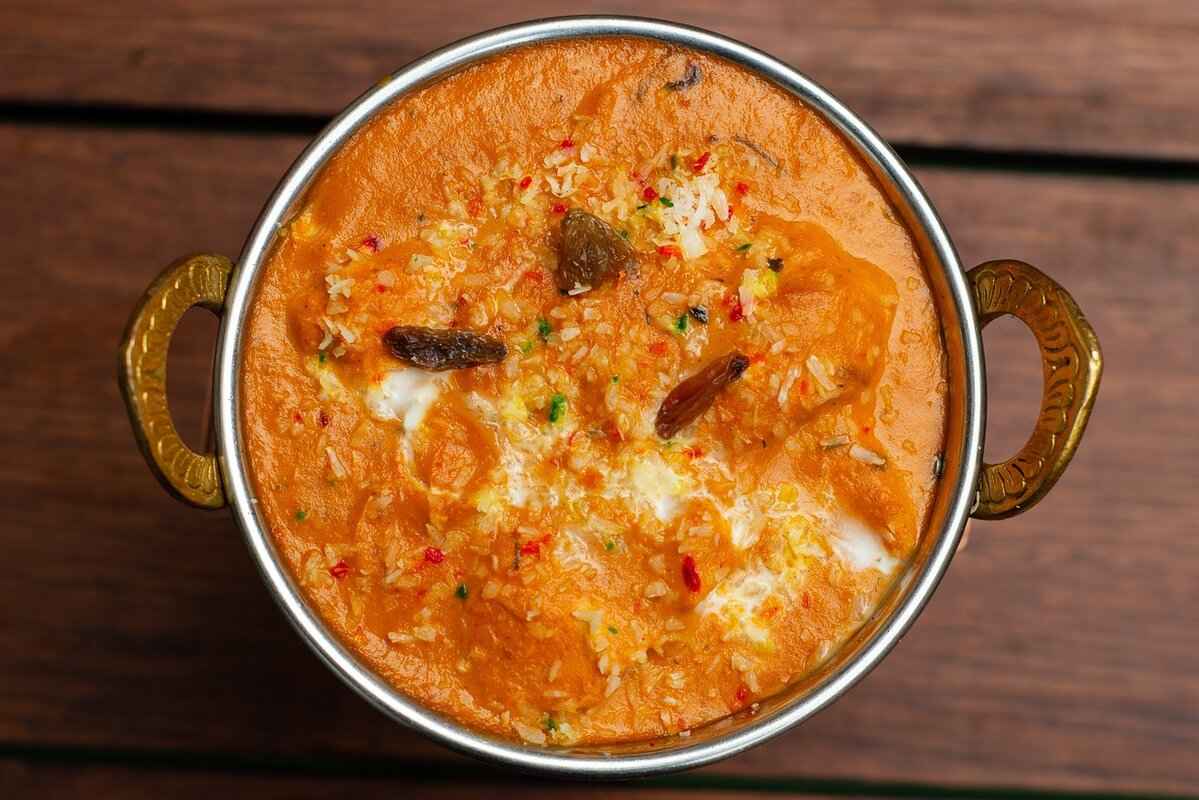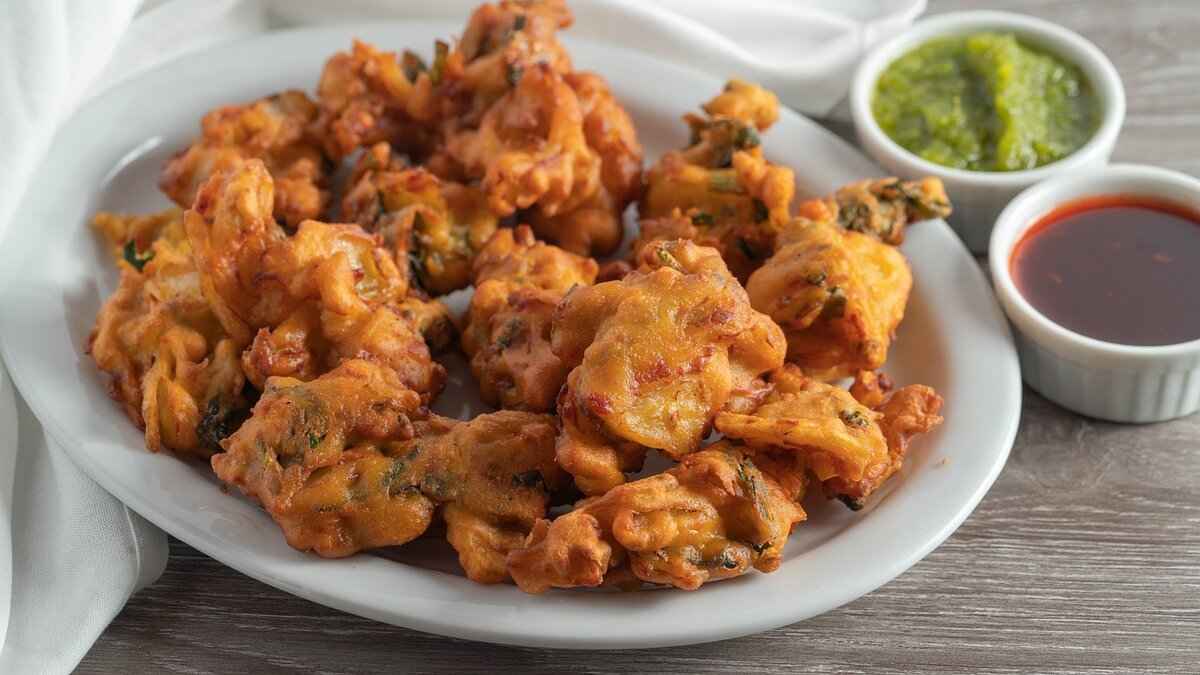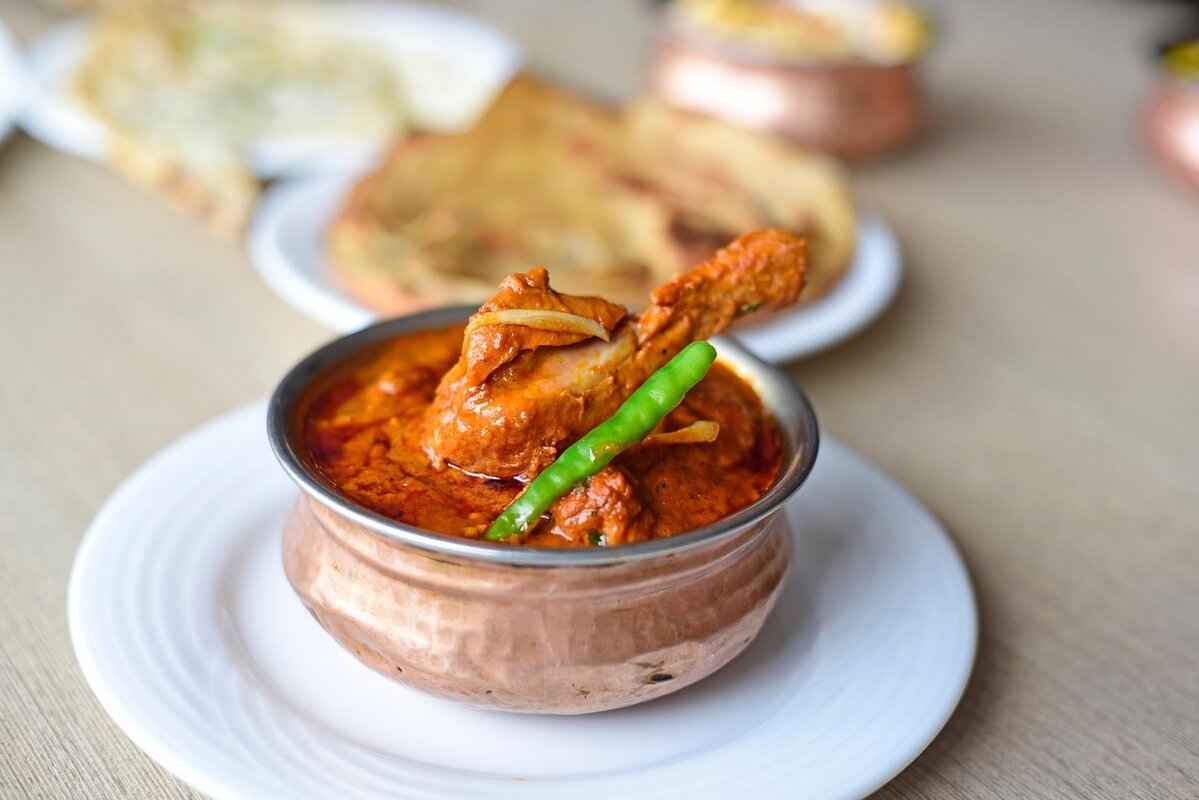This article delves into the rich history and evolution of Indian street food, highlighting its cultural significance, regional variations, and the various factors that have influenced its development over the years.
What is Indian Street Food?
Indian street food refers to a diverse array of inexpensive dishes sold by vendors on the streets, offering a unique blend of flavors and cooking techniques that reflect the culinary diversity of India. These foods are not just meals; they are an integral part of the social fabric and culture of Indian cities.
How Did Indian Street Food Emerge?
The origins of Indian street food can be traced back to ancient times when traveling merchants and local communities shared food. This practice led to the establishment of vibrant street food cultures across the country, where food became a means of social interaction and cultural exchange.
Regional Variations in Indian Street Food
Each region in India boasts its own unique street food specialties, influenced by local ingredients, traditions, and cultural practices. This diversity makes the street food scene incredibly vibrant and exciting.
- North Indian Street Food: Known for its rich flavors and hearty dishes, North Indian street food often features spices and diverse ingredients that cater to a wide range of tastes.
- South Indian Street Food: This region emphasizes rice, lentils, and coconut, resulting in lighter yet equally flavorful dishes, such as dosas and idlis.
- East Indian Delicacies: East India is famous for its sweets and fish-based dishes, showcasing the region’s culinary heritage.
- West Indian Flavors: The west is known for its spicy snacks and unique preparations, influenced by coastal ingredients and local spices.
How Has Globalization Influenced Indian Street Food?
Globalization has introduced new ingredients and cooking methods to Indian street food. This has led to the creation of fusion dishes that blend traditional Indian flavors with global culinary trends, catering to both traditional tastes and modern palates.
The Role of Technology in Street Food
Advancements in technology have transformed the street food landscape. From online ordering platforms to social media marketing, technology has made it easier for vendors to reach a wider audience and showcase their offerings.
Health and Safety in Street Food
With the growing popularity of street food, health and safety standards have become increasingly important. Vendors are adopting better practices to ensure food quality and hygiene, addressing concerns from consumers about food safety.
Future Trends in Indian Street Food
The future of Indian street food looks promising, with a focus on sustainability, health-conscious options, and the integration of technology. These trends ensure that this beloved culinary tradition continues to thrive and evolve.
In conclusion, the evolution of Indian street food is a testament to the country’s rich culinary heritage. It reflects the adaptability and creativity of local vendors, who continue to innovate while staying true to traditional flavors. As we move forward, it is essential to embrace these changes while preserving the essence of what makes Indian street food so special.

What is Indian Street Food?
Indian street food is a vibrant and integral part of India’s culinary culture, showcasing a plethora of flavors, aromas, and textures. It encompasses a wide variety of inexpensive dishes, typically sold by street vendors, that reflect the rich and diverse culinary landscape of the country. From bustling city streets to quiet village corners, these food stalls offer a unique glimpse into the everyday lives of people, serving up not just meals but also a sense of community and tradition.
The essence of Indian street food lies in its affordability and accessibility. Unlike formal dining establishments, street food can be enjoyed by anyone, making it a popular choice among locals and tourists alike. The dishes are often prepared in open-air kitchens, allowing patrons to witness the cooking process, which adds to the overall experience. The lively atmosphere of street food markets, filled with the sounds of sizzling pans and the chatter of eager customers, creates an inviting environment for food lovers.
One of the most fascinating aspects of Indian street food is its regional diversity. Each state in India boasts its own specialties, influenced by local ingredients, cultural practices, and historical traditions. For instance, in North India, you might encounter Chaat, a tangy snack made with potatoes, chickpeas, and a variety of chutneys. Moving down south, dishes like Vada Pav and Dosa highlight the use of rice and lentils, showcasing the culinary preferences of the region.
The popularity of street food in India can be attributed to several factors. Firstly, the variety of options available means that there is something to suit every palate. From spicy and savory to sweet and tangy, the flavors are bold and exciting. Secondly, the social aspect of sharing food in a communal setting enhances the overall experience, making it a favorite pastime for families and friends.
Indian street food is not just about sustenance; it is a reflection of the country’s rich cultural heritage. Many dishes have historical significance and are often linked to traditional festivals and celebrations. For example, during the festival of Diwali, special sweets and snacks are prepared and shared among families and friends, emphasizing the importance of food in cultural rituals.
While street food is delicious, it is essential to consider health and safety when indulging. Vendors are increasingly adopting better hygiene practices to ensure food quality. However, consumers should be cautious and choose stalls that maintain cleanliness and have a good reputation. Opting for freshly prepared items and observing how food is handled can help mitigate health risks.
In recent years, technology has played a significant role in transforming the street food landscape. With the rise of food delivery apps and social media marketing, vendors can now reach a broader audience. This shift has led to the emergence of fusion dishes that blend traditional Indian flavors with global culinary trends, catering to the evolving tastes of consumers.
In conclusion, Indian street food is a dynamic and ever-evolving culinary phenomenon that encapsulates the essence of India’s diverse culture and traditions. Its affordability, variety, and community-centric nature make it a cherished aspect of daily life in India, while its adaptability to modern influences ensures its continued relevance in the global food scene.

How Did Indian Street Food Emerge?
Indian street food is a vibrant and essential aspect of the country’s culinary landscape, rich in flavors and cultural significance. The question of how Indian street food emerged invites us to explore its fascinating history, which is deeply intertwined with the social and economic fabric of India.
The origins of Indian street food can be traced back to ancient times, when traveling merchants and local communities began to share their culinary creations. This practice not only facilitated the exchange of goods but also fostered a culture of communal dining, where food became a medium for social interaction. As trade routes expanded, so did the variety of ingredients and cooking techniques, leading to the establishment of vibrant street food cultures across the country.
In ancient cities, bustling markets served as the backdrop for street food vendors who prepared meals on the spot, catering to the needs of busy traders and local residents. These early vendors utilized fresh, locally sourced ingredients, creating dishes that were both affordable and satisfying. The simplicity of preparation and the use of spices made these meals popular among the masses, laying the groundwork for what we now recognize as Indian street food.
As time progressed, street food began to reflect the regional diversity of India. Each area developed its unique specialties, influenced by local customs, climate, and agricultural practices. For instance, in the northern regions, dishes like chole bhature and parathas became staples, while the south embraced idlis and dosas, showcasing the versatility of rice and lentils.
Furthermore, the impact of colonialism played a significant role in shaping Indian street food. The British introduced new ingredients and cooking techniques, which were adapted by local vendors to create innovative dishes. This fusion of culinary practices not only enriched the street food scene but also made it more accessible to a broader audience.
In modern times, the rise of urbanization has further transformed the landscape of Indian street food. As cities expanded, the demand for quick and affordable meals surged, leading to the proliferation of street food stalls. Today, vendors often experiment with flavors and presentation, incorporating global influences while staying true to traditional recipes.
Moreover, the advent of technology has revolutionized the way street food is marketed and consumed. Social media platforms have become vital tools for vendors to showcase their offerings, attracting a diverse clientele. Online food delivery services have also made it easier for people to enjoy their favorite street foods from the comfort of their homes, further popularizing this culinary tradition.
Despite these changes, the essence of Indian street food remains rooted in its ability to bring people together. Whether it’s a late-night snack or a quick lunch, street food continues to foster a sense of community, bridging gaps between different cultures and backgrounds. As we look to the future, the evolution of Indian street food is likely to continue, reflecting both the rich heritage of the past and the dynamic nature of contemporary society.

Regional Variations in Indian Street Food
Indian street food is a vibrant tapestry of flavors, textures, and aromas that varies significantly across the country. Each region has its own specialties, shaped by local ingredients, cultural practices, and historical influences. This diversity not only reflects the culinary heritage of India but also highlights the adaptability and creativity of street food vendors.
- North India: A Symphony of Spices
- Chaat: A Flavor Explosion – This quintessential North Indian snack is a delightful mix of ingredients such as boiled potatoes, chickpeas, and tangy tamarind chutney, topped with yogurt and spices. Each vendor boasts their own secret recipe, making every bite a unique experience.
- Parathas: Stuffed Goodness – North India is famous for its stuffed parathas, which can be filled with everything from spiced potatoes to paneer. Served hot with pickles and a dollop of yogurt, these flaky breads are a staple at street food stalls.
- South India: Light and Flavorful
- Idli and Sambar: A Breakfast Delight – These steamed rice cakes served with a spicy lentil soup are a popular street food choice, especially in the mornings. Vendors often serve them with a variety of chutneys, adding to the flavor profile.
- Paniyaram: A Unique Snack – Made from fermented rice and lentil batter, paniyaram is a savory dish that is crispy on the outside and soft on the inside. It is often served with coconut chutney, making it a delightful snack.
- West India: A Spicy Affair
- Pav Bhaji: A Mumbai Classic – This dish features a spicy vegetable mash served with buttered bread rolls. It is a must-try for anyone visiting Mumbai, showcasing the region’s love for bold flavors.
- Dhokla: A Steamed Snack – Originating from Gujarat, dhokla is a fermented steamed cake made from gram flour. It’s light, fluffy, and often garnished with mustard seeds and coriander, making it a popular snack across the region.
- East India: Sweet and Savory
- Fish Fry: A Coastal Delight – In West Bengal, street vendors serve crispy fish fry, marinated with spices and deep-fried to perfection. This dish is often accompanied by a side of tangy mustard sauce.
- Puchka: A Calcutta Favorite – Known as panipuri in other regions, puchka is a hollow puri filled with spicy tamarind water, chickpeas, and potatoes, providing a burst of flavors in every bite.
The regional variations in Indian street food not only cater to local palates but also reflect the rich cultural tapestry of the country. Each dish tells a story, bringing together history, tradition, and the everyday lives of the people who create and consume them. As globalization continues to influence culinary practices, we can expect even more exciting fusion dishes to emerge, further enriching the already diverse street food scene in India.
With the rise of health-conscious consumers, many vendors are also adapting their offerings to include healthier options while still maintaining the essence of traditional flavors. This evolution ensures that Indian street food remains a beloved part of the culinary landscape, appealing to both locals and tourists alike.
In summary, the street food of India serves as a delicious representation of its diverse regions, showcasing the creativity and adaptability of its vendors. Whether it’s the spicy chaat of the North or the savory idlis of the South, each bite offers a glimpse into the rich cultural heritage of this incredible country.
North Indian Street Food
is a vibrant tapestry of flavors, textures, and aromas that captivates both locals and tourists. The region’s street food is known for its rich and hearty offerings, characterized by the generous use of spices and a diverse array of ingredients. This culinary tradition has evolved over centuries, influenced by various cultures and historical events, making it a significant aspect of North India’s identity.
The essence of North Indian street food lies in its bold flavors and hearty portions. Vendors often prepare dishes on the spot, ensuring freshness and an authentic experience. The use of spices such as cumin, coriander, and garam masala enhances the taste, while ingredients like paneer, potatoes, and lentils are staples in many popular dishes. This unique blend of flavors is what keeps food lovers coming back for more.
- Chaat: This quintessential North Indian snack combines an assortment of ingredients such as boiled potatoes, chickpeas, yogurt, and a medley of tangy sauces. Each bite is a delightful explosion of flavors, making it a must-try for anyone visiting the region.
- Parathas: Stuffed parathas are another beloved street food item. These flaky flatbreads are often filled with a variety of ingredients, including paneer, potatoes, or cauliflower, and are typically served with pickles and yogurt.
- Kebabs: North India is famous for its succulent kebabs, marinated in spices and grilled to perfection. Whether it’s seekh kebabs or shami kebabs, these meat dishes are often served with naan or roti.
- Gol Gappe: Also known as pani puri, these crispy hollow puris are filled with a spicy mixture of water, tamarind, and chickpeas, providing a refreshing and tangy experience.
North Indian street food is more than just a meal; it is a reflection of the region’s rich cultural heritage. The bustling streets filled with food vendors create a lively atmosphere where people gather to enjoy meals together. This communal aspect of eating street food fosters social interactions and strengthens community bonds. Furthermore, festivals and local events often feature street food stalls, showcasing the importance of these culinary traditions in celebrations.
While indulging in North Indian street food is a delightful experience, it is essential to consider health and safety. Vendors are increasingly adopting better hygiene practices to ensure food safety. However, it is advisable for consumers to choose busy stalls with high turnover rates, as this often indicates freshness. Additionally, opting for cooked items rather than raw can help mitigate health risks.
The street food scene in North India is poised for growth, with a rising trend towards health-conscious options and sustainable practices. Many vendors are experimenting with fusion dishes that cater to modern tastes while preserving traditional flavors. As technology continues to influence the food industry, online platforms for ordering street food are becoming increasingly popular, making it easier for consumers to enjoy their favorite dishes from the comfort of their homes.
In summary, North Indian street food is a delightful blend of history, culture, and flavor. From the spicy chaat to the hearty parathas, each dish tells a story of the region’s culinary evolution. As it continues to adapt to modern trends, the essence of North Indian street food remains rooted in its rich heritage, making it an enduring favorite for generations to come.
Chaat: The Quintessential Snack
Chaat is not just a snack; it is a vibrant representation of North Indian street food culture. This beloved dish is a delightful amalgamation of flavors, textures, and aromas, captivating the taste buds of millions. Originating from the streets of India, chaat has evolved over the years, becoming a staple in both street-side stalls and upscale restaurants.
The essence of chaat lies in its diverse ingredients. Typically, it features a base of crisp fried dough or puffed rice, topped with a medley of boiled potatoes, chickpeas, and yogurt. The dish is then generously drizzled with tangy tamarind sauce and spicy green chutney, creating a perfect balance of sweet, sour, and spicy flavors. Each bite offers an explosion of taste, making it a favorite among food enthusiasts.
Across India, chaat takes on various forms, reflecting regional ingredients and culinary traditions. For instance:
- Pani Puri: A popular variant from Mumbai, consisting of hollow puris filled with spicy water and tamarind.
- Aloo Tikki Chaat: A North Indian favorite featuring spiced potato patties served with chutneys and yogurt.
- Bhel Puri: A light and crunchy option from Mumbai, combining puffed rice, vegetables, and tangy sauces.
While chaat is often considered a guilty pleasure, it can be made healthier by opting for fresh ingredients and reducing the use of fried elements. Many vendors are now offering whole grain alternatives and incorporating more vegetables into their recipes, catering to health-conscious consumers.
Beyond its deliciousness, chaat holds cultural significance in India. It is commonly enjoyed during festivals, family gatherings, and social events, symbolizing togetherness and celebration. Street vendors often become community hubs, where people from all walks of life come together to enjoy this delightful snack.
Making chaat at home can be a fun and rewarding experience. Here’s a simple recipe to try:
Ingredients:- 2 cups boiled potatoes, diced- 1 cup boiled chickpeas- 1 cup yogurt- 1/2 cup tamarind chutney- 1/2 cup green chutney- Chaat masala, to taste- Puffed rice or papdi for crunch- Fresh coriander and sev for garnishInstructions:1. In a large bowl, combine boiled potatoes and chickpeas.2. Add yogurt, tamarind chutney, and green chutney. Mix well.3. Sprinkle chaat masala and toss gently.4. Serve on a plate topped with puffed rice or papdi, and garnish with fresh coriander and sev.5. Enjoy your homemade chaat!
As food trends evolve, chaat continues to adapt, incorporating modern flavors and ingredients while retaining its traditional roots. With the rise of food trucks and pop-up stalls, chaat is reaching new audiences worldwide, ensuring that this quintessential snack remains a beloved part of Indian cuisine.
Parathas and Their Variations
Parathas are a beloved staple in North Indian cuisine, celebrated for their versatility and rich flavors. These unleavened flatbreads can be found in various forms across the region, often stuffed with an array of ingredients that range from spiced potatoes to paneer, and even seasonal vegetables. The tradition of making parathas is not just about sustenance; it embodies the essence of Indian culinary heritage.
The appeal of parathas lies in their comforting nature and the ability to customize fillings according to personal preferences. They are typically served hot and crispy, accompanied by pickles, yogurt, or raita, enhancing the overall flavor experience. The combination of a flaky exterior with a savory filling creates a delightful contrast that is hard to resist.
- Aloo Paratha: Stuffed with spiced mashed potatoes, this is perhaps the most popular variant. It is often enjoyed with a dollop of butter.
- Paneer Paratha: This version incorporates crumbled paneer mixed with spices, offering a rich and creamy texture.
- Gobi Paratha: Made with grated cauliflower, this paratha is not only tasty but also packed with nutrients.
- Mixed Vegetable Paratha: A medley of seasonal vegetables is used in this variant, making it a wholesome choice.
The process of making parathas begins with preparing the dough, which is typically made from whole wheat flour. The dough is kneaded until smooth and left to rest. Meanwhile, the stuffing is prepared by cooking and seasoning the chosen ingredients. Once ready, small portions of dough are rolled out, filled with the stuffing, and then rolled again to encase the filling. The parathas are then cooked on a hot griddle, often brushed with ghee or oil, until golden brown.
In North India, parathas have transcended home kitchens to become a street food phenomenon. Street vendors, known for their expertise, often serve parathas with an assortment of chutneys and salads, making them a quick and satisfying meal option for busy city dwellers. The bustling atmosphere of street food stalls adds to the experience, making it not just a meal but a cultural event.
While parathas are often seen as indulgent due to their oil content, they can be made healthier by using less oil, incorporating whole grain flour, and adding more vegetables to the stuffing. Furthermore, pairing them with yogurt or salads can enhance their nutritional value. It’s all about balance and making informed choices.
Stuffed parathas are more than just a food item; they represent a rich culinary tradition that has evolved over centuries. Their adaptability and the joy they bring to the dining table make them a cherished part of North Indian street food culture. Whether enjoyed at a local eatery or made at home, parathas continue to delight palates and bring people together.
South Indian Street Food Delights
South Indian street food is a vibrant tapestry of flavors and textures, offering a culinary experience that is both unique and deeply rooted in tradition. The cuisine predominantly features rice, lentils, and coconut, which form the foundation of many dishes, resulting in lighter yet equally flavorful offerings.
South Indian street food is distinguished by its emphasis on fresh ingredients and regional spices. Dishes like idli and dosa are not only popular but also showcase the versatility of rice and lentils. These dishes are often accompanied by a variety of chutneys and sambars, enhancing their flavor profiles and providing a delightful culinary experience.
- Idli: These steamed rice cakes are a staple breakfast item, served with coconut chutney and sambar.
- Dosa: A thin, crispy crepe made from fermented rice and lentil batter, often stuffed with spicy potato filling.
- Paniyaram: Small, round dumplings made from leftover dosa batter, usually served with chutney.
- Vada: Savory lentil donuts that are deep-fried until golden brown, typically enjoyed with chutney.
- Uttapam: A thick pancake topped with vegetables, offering a hearty option for street food lovers.
The use of fresh ingredients such as curry leaves, mustard seeds, and green chilies is crucial in South Indian cuisine. These ingredients not only enhance the taste but also contribute to the overall healthiness of the dishes. The incorporation of coconut in various forms—grated, milk, or oil—adds a rich flavor and is a hallmark of South Indian cooking.
Street food in South India is more than just a meal; it is a cultural experience that brings communities together. Vendors often have their unique recipes, passed down through generations, which adds a personal touch to the food they serve. This cultural significance is evident during festivals and gatherings, where street food plays a central role in celebrations.
While South Indian street food is generally lighter compared to other regional cuisines, it is essential to consider health and hygiene. Many vendors are now adopting better practices to ensure food safety, such as using fresh ingredients and maintaining cleanliness in their cooking environments. This shift is crucial as more health-conscious consumers seek out street food options.
As globalization continues to influence culinary trends, South Indian street food is evolving. Fusion dishes that blend traditional flavors with modern techniques are becoming increasingly popular. For instance, the introduction of quinoa idli caters to health-conscious diners without compromising on taste. This evolution ensures that South Indian street food remains relevant and appealing to a wider audience.
In summary, South Indian street food offers a delightful and diverse culinary experience that emphasizes the use of rice, lentils, and coconut. With its rich flavors, cultural significance, and evolving nature, it continues to capture the hearts and palates of food lovers around the world.

How Has Globalization Influenced Indian Street Food?
Globalization has significantly reshaped the culinary landscape of Indian street food, blending traditional flavors with modern influences. This fusion of cultures has not only diversified the offerings available on the streets but also catered to a wider audience, including locals and international tourists. As a result, street food has evolved into a dynamic culinary experience that reflects the changing tastes and preferences of society.
With the influx of global culinary trends, Indian street food vendors have started incorporating exotic ingredients that were previously uncommon in traditional recipes. For instance, quinoa, avocado, and various international cheeses are now making their way into dishes like chaat and parathas. This not only enhances the nutritional value of the food but also appeals to health-conscious consumers.
In addition to new ingredients, globalization has introduced innovative cooking techniques to Indian street food. Traditional frying methods are now often complemented by grilling and steaming, which offer healthier options. For example, grilled corn and steamed dumplings have gained popularity, providing a delicious yet lighter alternative to deep-fried snacks.
The fusion of Indian street food with international cuisines has led to the creation of unique dishes that reflect this culinary evolution. Popular examples include:
- Masala Tacos: A blend of traditional Indian spices in a taco shell, offering a delightful twist.
- Paneer Burgers: A vegetarian burger that combines Indian cottage cheese with Western-style toppings.
- Thai Curry Biryani: A dish that merges the aromatic spices of biryani with the creamy texture of Thai curry.
As consumer preferences shift towards healthier and more convenient options, street food vendors are adapting their menus accordingly. Many are now offering gluten-free and vegan options, ensuring that everyone can enjoy the vibrant street food culture. This adaptability not only attracts a broader audience but also helps in preserving the essence of Indian street food while making it relevant in today’s fast-paced world.
Technology has significantly influenced the street food scene, making it easier for vendors to experiment with new recipes and reach out to customers. Online platforms allow vendors to showcase their innovative dishes and gather feedback, enabling them to refine their offerings continuously. Additionally, social media plays a crucial role in promoting these fusion dishes, helping them gain popularity beyond local markets.
Despite the exciting changes, the fusion of global influences into Indian street food does come with challenges. Traditionalists may argue that these new dishes dilute the authenticity of Indian cuisine. However, many chefs and vendors believe that evolution is a natural part of culinary practices, and innovation can coexist with tradition.
In conclusion, globalization has undeniably transformed Indian street food, introducing a plethora of new ingredients, cooking methods, and fusion dishes that cater to contemporary tastes. As this vibrant culinary scene continues to evolve, it reflects a rich tapestry of culture, history, and innovation, ensuring that Indian street food remains a beloved staple for generations to come.

The Role of Technology in Street Food
In recent years, the street food industry has witnessed a remarkable transformation, largely fueled by advancements in technology. This evolution has not only enhanced the way street food is prepared and served but has also significantly expanded the reach of vendors. From online ordering platforms to innovative marketing strategies on social media, technology has revolutionized the street food landscape, making it easier for vendors to connect with a broader audience.
Gone are the days when street food enthusiasts had to rely solely on word-of-mouth recommendations. Today, online ordering platforms such as Swiggy and Zomato have made it possible for customers to browse menus, place orders, and pay with just a few clicks. This convenience has not only increased sales for vendors but has also provided customers with a seamless experience. By integrating GPS technology, these platforms allow users to track their orders in real-time, adding an extra layer of satisfaction to the street food experience.
Social media has emerged as a powerful tool for street food vendors, enabling them to showcase their culinary creations and engage with customers directly. Platforms like Instagram and Facebook allow vendors to share enticing images of their dishes, attracting potential customers and generating buzz around their offerings. The use of influencer marketing has further amplified this effect, with food bloggers and local influencers promoting street food spots to their followers, thereby increasing foot traffic and online orders.
While technology has undoubtedly brought numerous benefits to the street food sector, it also presents certain challenges. For instance, the reliance on online platforms can lead to increased competition among vendors, making it essential for them to differentiate their offerings. Additionally, technology adoption can be daunting for some traditional vendors who may lack the resources or knowledge to leverage these tools effectively. Thus, training and support are crucial for ensuring that all vendors can benefit from technological advancements.
Data analytics plays a critical role in helping street food vendors understand customer preferences and trends. By analyzing sales data and customer feedback, vendors can tailor their menus to meet the evolving tastes of their clientele. This data-driven approach not only enhances customer satisfaction but also optimizes inventory management and reduces food waste. As technology continues to advance, the ability to harness data will become increasingly important for vendors looking to stay competitive in the bustling street food market.
The introduction of mobile payment solutions has revolutionized the way transactions are conducted in the street food industry. With options like Paytm, Google Pay, and other digital wallets, customers can now make quick and secure payments without the need for cash. This convenience not only speeds up the transaction process but also enhances safety, as vendors and customers alike can avoid handling cash. Furthermore, mobile payments can provide vendors with valuable transaction data, helping them make informed business decisions.
In conclusion, the role of technology in street food is multifaceted, encompassing online ordering, social media marketing, data analytics, and mobile payments. As these technological advancements continue to evolve, they will undoubtedly shape the future of street food, creating new opportunities for vendors and enhancing the overall experience for consumers.

Health and Safety in Street Food
As the vibrant world of street food continues to flourish, the importance of health and safety standards has become paramount. Street food, with its tantalizing flavors and affordable prices, attracts millions of food lovers globally. However, with this popularity comes the responsibility of ensuring that food is prepared and served in a safe environment.
Health standards are essential for protecting consumers from foodborne illnesses. Street food vendors, often operating in open-air environments, face unique challenges, such as exposure to contaminants and fluctuating temperatures. Adhering to strict hygiene practices not only safeguards public health but also enhances the vendor’s reputation and customer trust.
- Regular Handwashing: Vendors must wash their hands frequently, especially after handling raw ingredients or using the restroom.
- Use of Clean Utensils: All cooking and serving utensils should be sanitized regularly to prevent cross-contamination.
- Proper Food Storage: Ingredients must be stored at safe temperatures to inhibit bacterial growth.
- Cooking Thoroughly: Foods should be cooked to the appropriate temperatures to kill harmful pathogens.
In response to increasing scrutiny from health authorities, many street food vendors are adopting improved practices. Training programs on food safety are becoming commonplace, with vendors learning about proper food handling, sanitation, and customer service. Additionally, some cities are implementing licensing systems that require vendors to meet specific health standards before they can sell food.
Technology is revolutionizing the street food scene. Many vendors are now using mobile apps for inventory management, which helps them track the freshness of their ingredients. Furthermore, digital platforms allow for greater transparency, as customers can access health inspection scores and reviews before choosing where to eat.
Today’s consumers are increasingly aware of the importance of food safety. Many people are now asking vendors about their hygiene practices and the sourcing of ingredients. This shift in consumer behavior is pushing vendors to prioritize health and safety measures, ultimately leading to a better dining experience.
Looking ahead, the trend towards sustainability and health-conscious options is expected to continue. Vendors are exploring organic ingredients and environmentally friendly packaging, aligning with the growing demand for healthier food choices. Additionally, the integration of smart technology in food preparation and storage is anticipated to further enhance food safety.
In conclusion, as street food continues to captivate the taste buds of many, the emphasis on health and safety will remain a critical aspect of this culinary tradition. By adopting better practices and leveraging technology, vendors can ensure that they not only meet health standards but also contribute to a safer and more enjoyable street food experience for all.

Future Trends in Indian Street Food
The future of Indian street food is not only bright but also evolving in exciting ways. As urbanization and globalization continue to shape culinary trends, street food vendors are adapting to meet the changing preferences of consumers. This article explores the upcoming trends that are set to redefine Indian street food, focusing on sustainability, health-conscious options, and technological integration.
With increasing awareness about environmental issues, sustainability has become a key focus for street food vendors. Many are now opting for eco-friendly packaging and sourcing ingredients from local farmers to reduce their carbon footprint. This shift not only supports the local economy but also appeals to environmentally conscious consumers. Vendors are experimenting with plant-based dishes that utilize seasonal produce, offering delicious options that are both sustainable and nutritious.
As people become more health-aware, there is a rising demand for health-conscious street food. Vendors are innovating by incorporating whole grains, fresh vegetables, and lean proteins into their menus. Traditional dishes are being reimagined to include healthier ingredients without compromising on taste. For example, chaat can now be made with quinoa or whole wheat, providing a nutritious twist to this beloved snack. Additionally, options like gluten-free and vegan street food are gaining popularity, ensuring that everyone can enjoy these culinary delights.
Technology is playing a pivotal role in transforming the street food scene. Many vendors are now using mobile apps for online orders and deliveries, making it easier for customers to enjoy their favorite dishes from the comfort of their homes. Social media platforms are being leveraged for marketing, allowing vendors to showcase their unique offerings and connect with a broader audience. Innovations such as digital menus and contactless payment options are enhancing the overall customer experience, making street food more accessible than ever.
The influence of globalization has led to the emergence of fusion cuisine within the street food landscape. Vendors are creatively blending traditional Indian flavors with international cuisines, resulting in exciting new dishes. For instance, tacos filled with spicy paneer or pasta tossed with Indian spices are becoming increasingly popular. This fusion not only attracts a diverse customer base but also encourages culinary exploration and innovation.
As street food gains popularity, the importance of health and safety standards cannot be overstated. Vendors are adopting stricter hygiene practices to ensure food quality and safety. Regular training sessions on food handling and sanitation are becoming commonplace, helping to build consumer trust. The implementation of transparent food preparation methods, such as open kitchens, allows customers to see the cleanliness and quality of the food being served.
In conclusion, the future of Indian street food is set to embrace change while honoring its rich traditions. With a strong emphasis on sustainability, health-conscious options, and the integration of technology, this culinary art form is poised to thrive. As street food continues to evolve, it will undoubtedly remain a cherished part of India’s cultural heritage, delighting taste buds and bringing communities together.
Frequently Asked Questions
- What are some popular Indian street food dishes?
Some must-try Indian street food dishes include Chaat, Pani Puri, Vada Pav, and Dosa. Each of these dishes showcases unique flavors and ingredients that reflect the diverse culinary traditions of India.
- Is Indian street food safe to eat?
While many vendors maintain high standards of hygiene, it’s important to choose popular stalls with good foot traffic. Look for places where the food is freshly prepared and served hot to minimize any health risks.
- How has globalization affected Indian street food?
Globalization has led to the fusion of traditional Indian flavors with international cuisines, resulting in innovative dishes like Mexican Chaat or Italian Samosas. This evolution keeps the street food scene exciting and ever-changing!
- Can I find vegetarian options in Indian street food?
Absolutely! Many Indian street food dishes are vegetarian, with options like Paneer Tikka, Vegetable Biryani, and various types of Chaat. There’s something for everyone!
- What role does technology play in the street food industry?
Technology has revolutionized the street food scene by enabling online ordering, delivery apps, and social media marketing. Vendors can now reach a wider audience and adapt to changing consumer preferences more easily.














